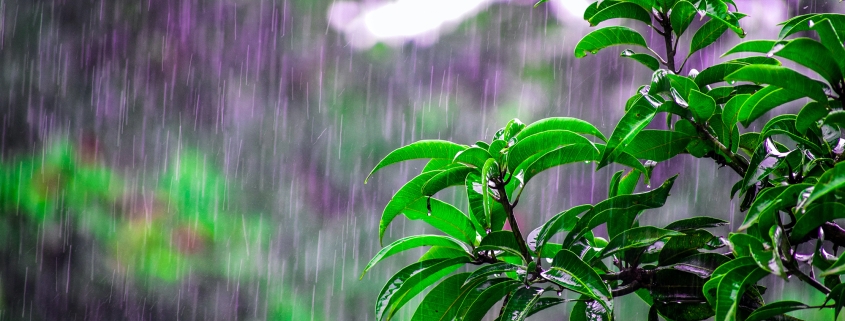How Too Much Rain Affects Your Landscaping
Every year has its weather challenges. But in this region, we’re usually dealing with too much heat and drought. With all the rain we’ve been having, we thought we would speak to how our lawns, plantings, and patios are faring. As with many things in life, too much of a good thing is actually too much of a good thing. Too much rain can hurt your yard in these ways:
Fungus – Lots of rain and humidity are the perfect conditions for fungal issues to arise.
Erosion – If your landscape is hilly, the rain’s run off can take the soil with it. In addition to causing rutting, rivers of water running through your property washes away good soil with important nutrients in it.
Pooling – When too much rainwater has no place to go, pools can accumulate in low areas. Flooded grass has a hard time processing the water and nutrients it needs from the soil and can turn yellow and even brown. Pooled water can also result in an increase in water-loving insects like mosquitoes.
Waterlogged Roots – The space between soil particles contain much need oxygen that plants draw upon via their root systems. When too much rain compresses the soil, the air gets displaced and the plants become deprived of oxygen.
Solutions
Take note of what problems you are seeing and where they are occurring. Give your yard time to dry out. It can sometimes take a while to both dry and to begin to see symptoms like yellowing leaves.
- Try not to walk on your lawn or dig in your garden if it’s muddy.
- Don’t mow a wet lawn.
- Some fungal problems will go away on their own as the weather dries out. If this is not the case with your plantings, try an organic fungicide.
- Aerate your soil once it is dry to replenish oxygen.
- Create a dry bed with gravel for future rainwater to have a better path to run off.
- Bury your downspouts to keep too much water from flowing onto the surface of your lawn and garden beds.
- Build a rain garden so water collected in a chosen area and allowed to slowly soak into the ground.
- Create better drainage for your beds by planting in berms or artificial mounds.
- Use mulch. It helps control water absorption.
- Empty rainwater from your container plants.
- Redirect water away from your patio by changing the direction of gutter downspouts, drilling drainage holes, or by replacing it using permeable materials.
Your lawn and landscape are a part of nature just like the rain is, but sometimes it just needs a bit of our help to keep it safe.




